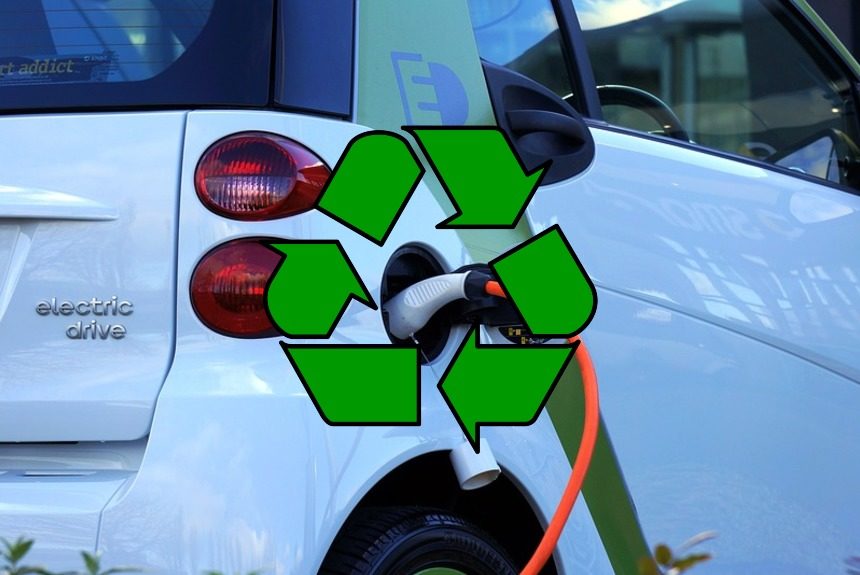When one considers the increasing uptake of electric vehicles (EVs), an inevitable question is what will happen to them when they reach their end of life.
How should we deal with the possible deluge of e-waste while minimising environmental harm?
Not only cars but trucks, buses, motorcycles, scooters, ships, and even aeroplanes will need to be electrified if we are to transition to a cleaner, fossil fuel-free future and fight climate change.
In contrast to EVs, materials from petrol and diesel cars are 95% recyclable. Still, since EVs have different configurations, they are enclosed in complex electrical components consisting of various materials, such as lithium and cobalt inside the batteries and rare-earth metals in motors, making their recycling a complex task.
Additionally, an EV’s battery pack is made from several electrochemical cells that can be configured in various ways, and the battery chemistry differs from one battery to another.
Standardising car batteries with recycling in mind
Standardising the configuration of car batteries and designing them with recycling in mind seems to be the logical solution. Breaking apart valuable parts like cathodes and electrical connections to recover copper would allow for reusing the materials in a purer form. It will also reduce the number of materials thrown in to be shredded, which is a more efficient and sustainable recycling method.
Recycling cobalt, an essential element of lithium-ion batteries that boosts the battery’s energy density and life, is also crucial because it will reduce the need to mine this element. Two-thirds of the cobalt supply comes from Congo, where the supply chain is linked to human rights and environmental abuses—another reason why some carmakers wanted to eliminate the cobalt (Patel, 2020).
Cobalt-free batteries
A group of researchers from the University of Texas at Austin developed a high-performance cobalt-free battery. The battery contains 89% nickel, with aluminium and manganese comprising the rest. Lab testing provides very encouraging results in terms of the battery’s energy density and charge cycles.
Click the link to read more: Lithium-ion batteries go cobalt-free
Recycling lithium-ion batteries
Thankfully, according to the Economist article, recycling industries are popping up worldwide to cater to the demand for recycling EVs.
Because lithium-ion batteries are highly flammable, they are crushed separately in special machines and elements that suppress combustion, producing a result known as the “black mass”.
“Black Mass” is further processed to extract valuable components using two main extraction methods: pyrometallurgy and hydrometallurgy.
Pyrometallurgy uses a furnace to separate pure metals such as cobalt. However, this method is energy-intensive and destroys most valuable components, such as graphite.
The latter, hydrometallurgy, uses acids and solvents to dissolve metals, including lithium. This method requires less energy and allows the recovery of non-metallic materials like graphite.
However, using this method requires additional costs in treating wastewater to avoid pollution. According to the article, this is the recycling method favoured by the two.
Recycling Industries in the world
The article mentions the following EV recyclers around the world: Canada’s Li-Cycle relies on hydrometallurgy and can recycle up to 95% of the materials in batteries, which can then be used directly to make new batteries. The company also sends other parts of the EVs, like plastic and copper, to other recyclers.
Redwood Materials, based in Nevada, uses a mixture of pyrometallurgy and hydrometallurgy for recycling.
Two lithium-ion battery makers, Northvolt, based in Sweden, and American Battery Technology, based in Nevada, expanded their operations to include a recycling facility to recycle their batteries to recover lithium and other metals from expired batteries.
However, according to the article, the largest recyclers are in China. The country is the biggest EV manufacturer, and it should rightly follow that it should have the technology to recycle EVs with encouragement from its government.
Australia’s EcoGrap extracts graphite from black mass to be reused to make anodes. South Korea’s SungEel HiTech is also building a facility that does the same thing.
In the end, what would help these recyclers worldwide to efficiently and sustainably recycle EVs is that battery makers design them with recycling in mind.
Frank Blome, head of batteries at Volkswagen, says that their battery experts are working with its recyclers to make their tasks easier, adding that “anyone who takes something apart must first know how it was put together.”
To read the entire Economist article, click the link below:
Sources:
Old electric cars are a raw material of the future. (2021, May 15). The Economist. Retrieved from https://www.economist.com/science-and-technology/2021/05/13/old-electric-cars-are-a-raw-material-of-the-future
Patel, P. (2020, July 22). Lithium-ion batteries go cobalt-free. C&en. Retrieved from https://cen.acs.org/energy/energy-storage-/Lithium-ion-batteries-cobalt-free/98/i29



Leave a Reply